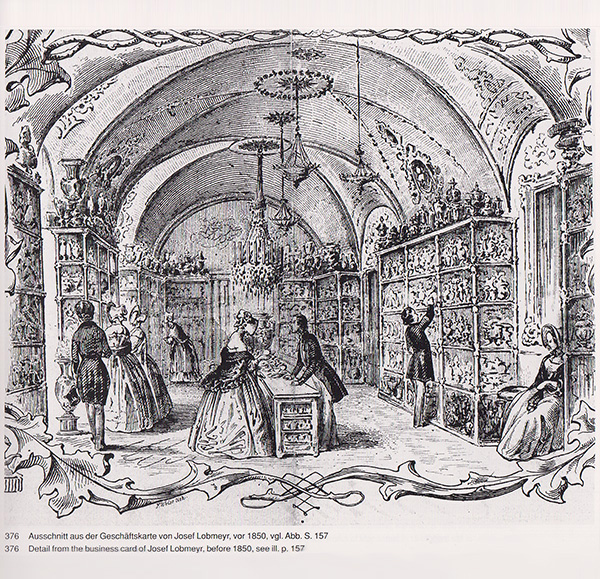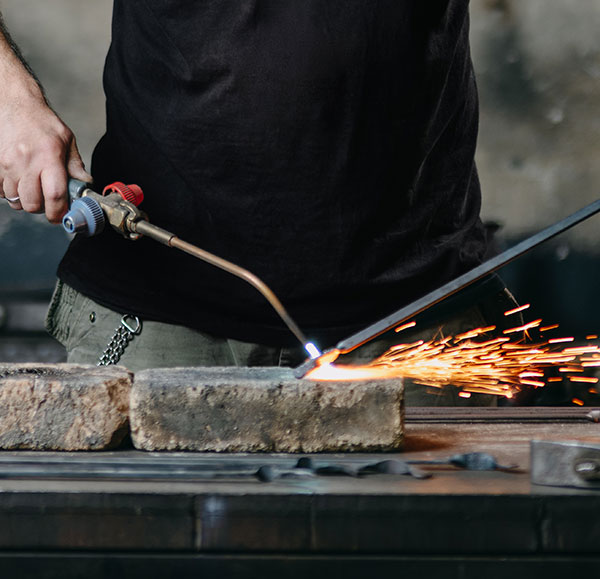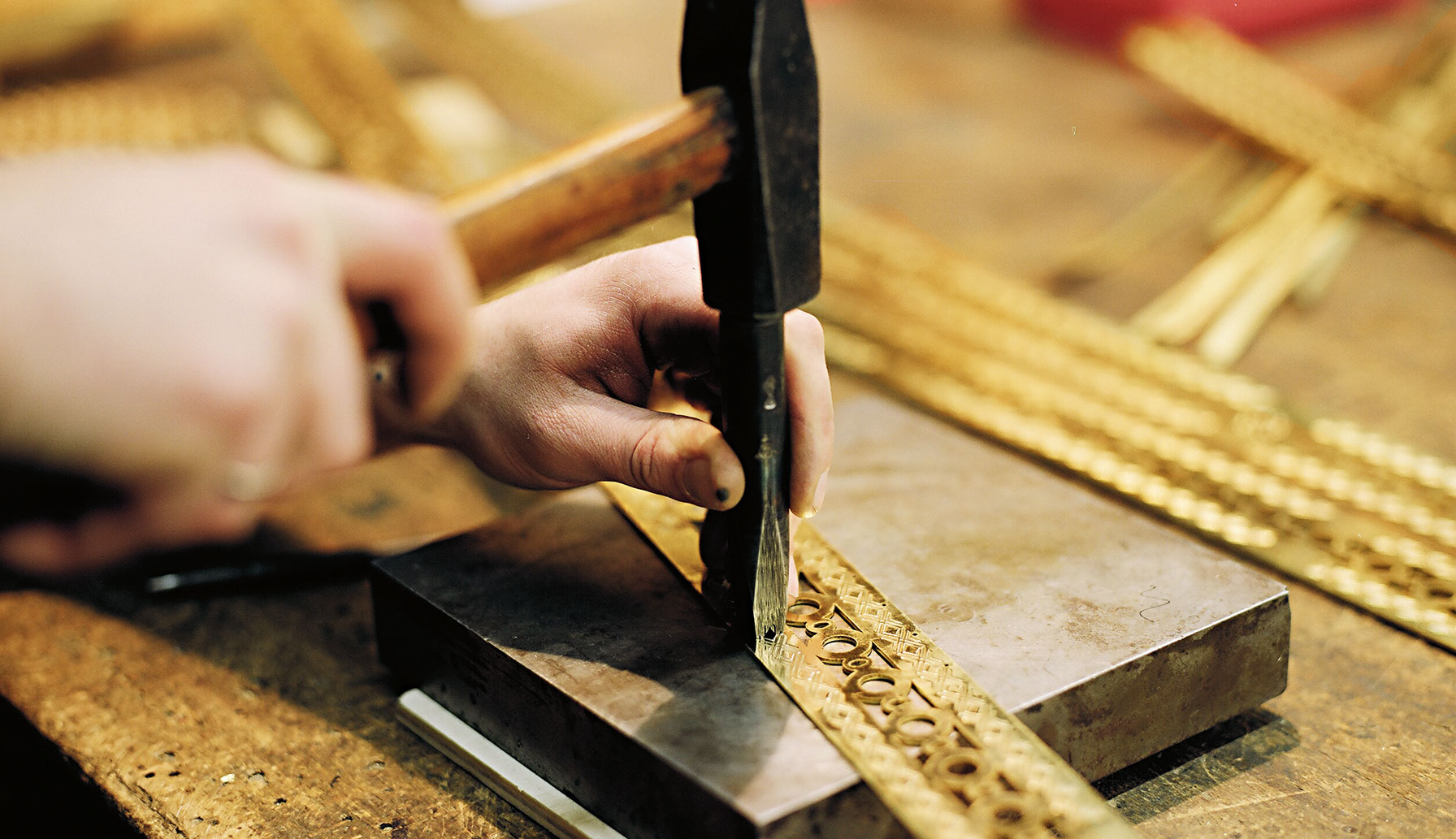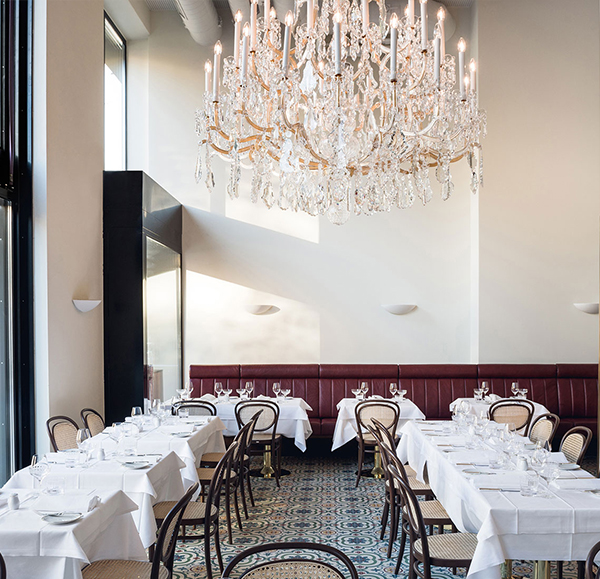
Login
NEW CUSTOMERS
By creating an account with our store, you will be able to move through the checkout process faster, store multiple shipping addresses, view and track your orders in your account and more.
CREATE AN ACCOUNTSEARCH
Shopping cart
When polishing the lamp with a piece of cloth Aladdin beheld his own image…
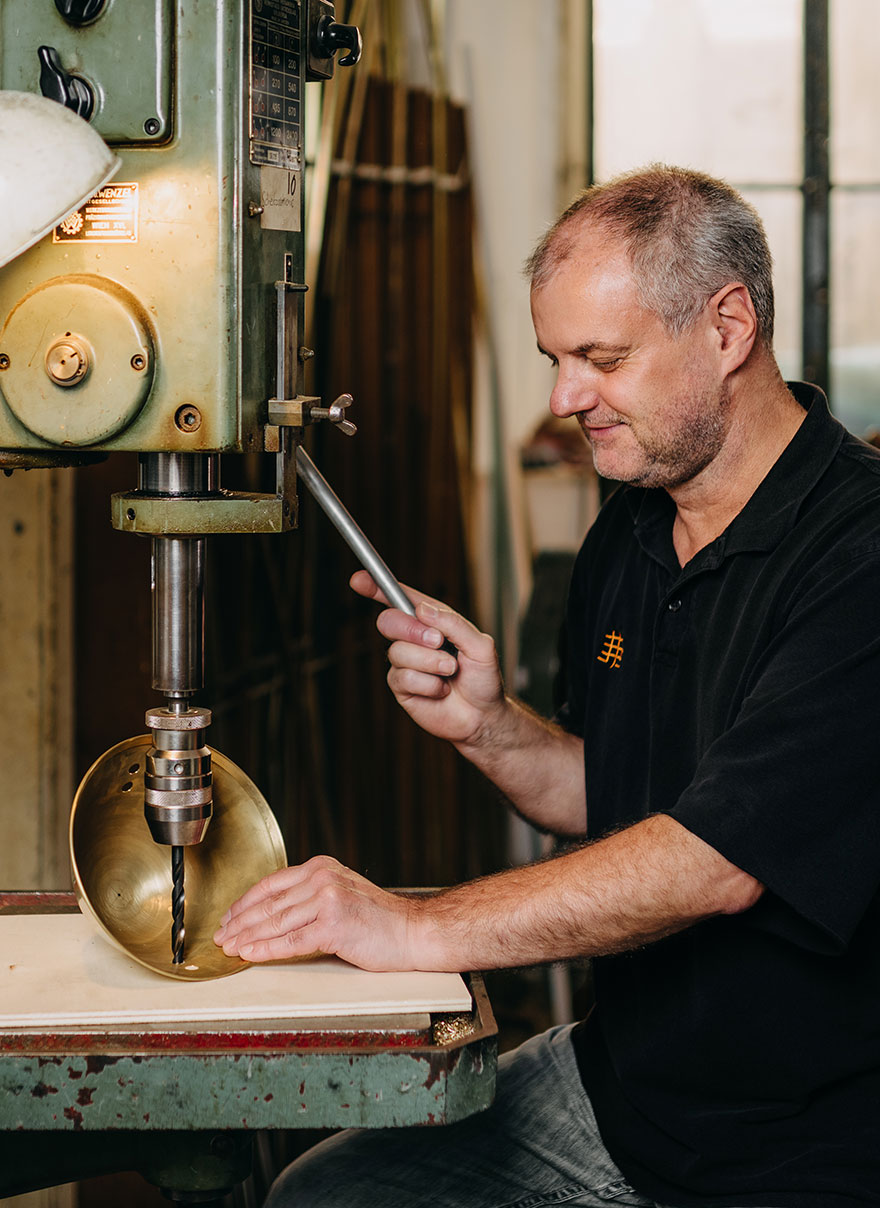
Scratching the surface
The most important property of brass though is its colour: it shines almost like gold! When polished it reflects like mirror and gets a silken touch when left matt.
When treated properly it ages nicely. There are countless recipes to accelerate and control the aging practice. This special trade can create almost any tone of colour and brilliance by using oils, acids, dirts and countless other nameless ingredients. Those recipes are held dear like secrets of an alchemist.
Various electroplating tones like silver and gold add to the palette of finishes for brass.
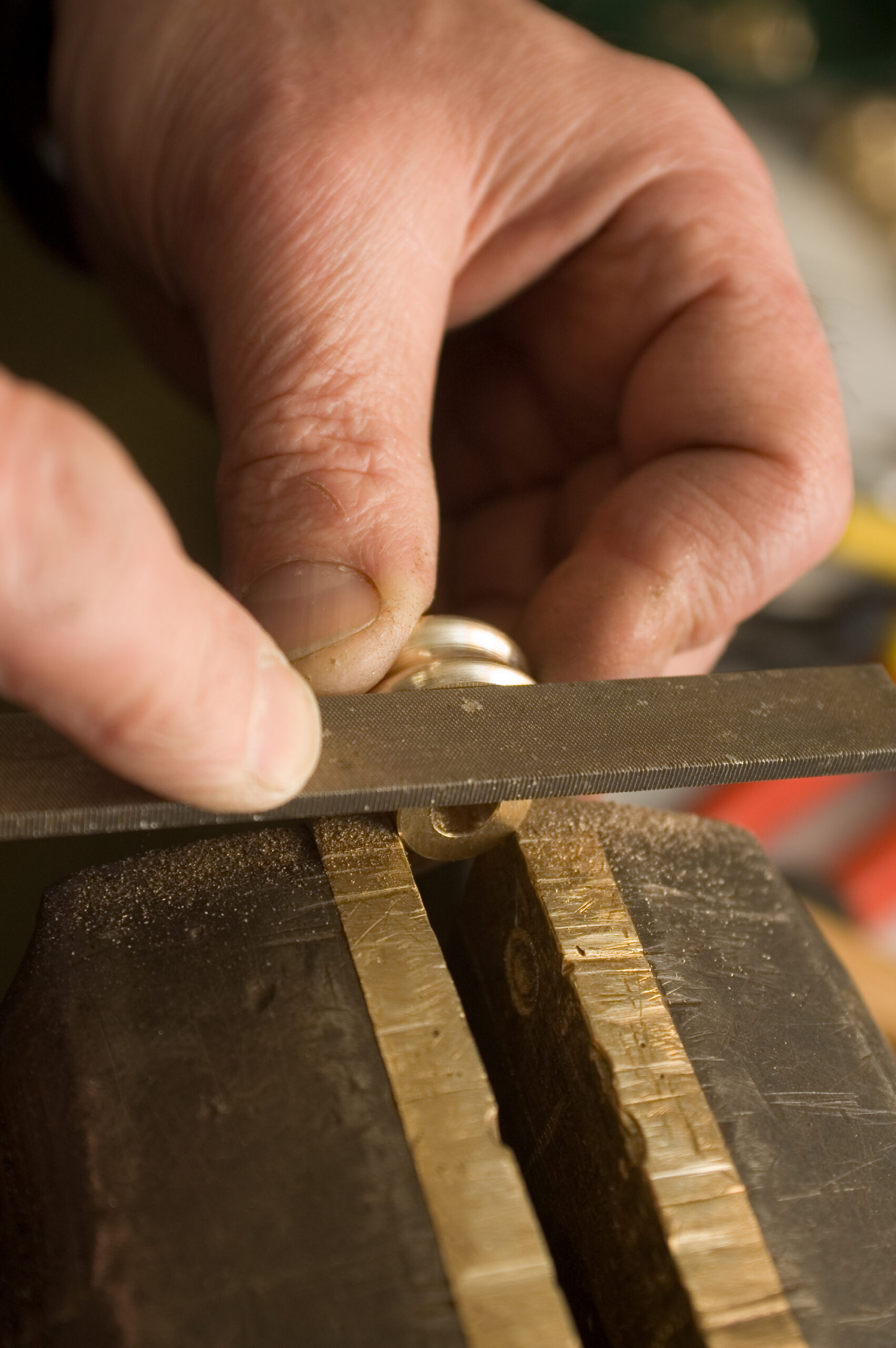
The coppersmith, as the name suggests, works with brass. Not only brass, many other metals fall into the coppersmith’s choice of materials. Their common denominator is that they are alloys of various other metals such like tin or zinc mixed with copper being the main ingredient.
Since antiquity brass or bronze have been the prime material for elaborate lamps and candelabra.
It is strong enough to construct larger contraptions but also soft enough to be worked with a plethora of different techniques constituting the trade of the coppersmith.
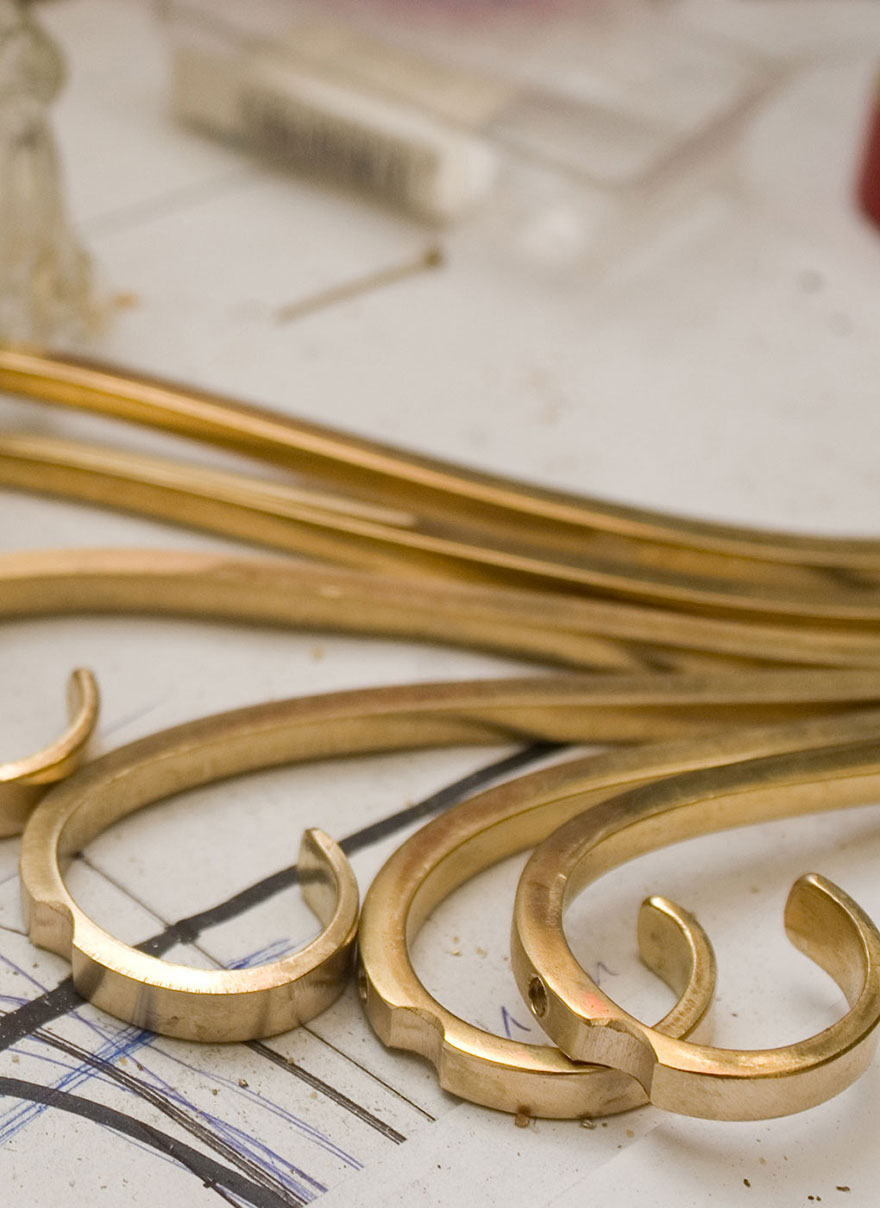
Metal in skilled hands
As a soft material brass can be worked with many manual techniques such as filing, embossing and chasing, Hammerstroke and repoussé to name a few.
With adding the power of machines, even more techniques are at the disposal of our artisans:
Turning and spinning shape parts on a lathe. Knurling uses special steel stamps to emboss a continuous pattern on spinning brass parts, also on a lathe. Pressing and cupping are techniques that are more industrial and require even heavier machinery and large output.
In between shape and ornament
Some chandeliers are overly decorated with the finest details; others have a distinctive shape of pure form. As it is often the case also with chandeliers the plain and seemingly simple pieces are the most difficult to make.
It is easy to hide connection points or structural elements behind elaborate ornamentation.
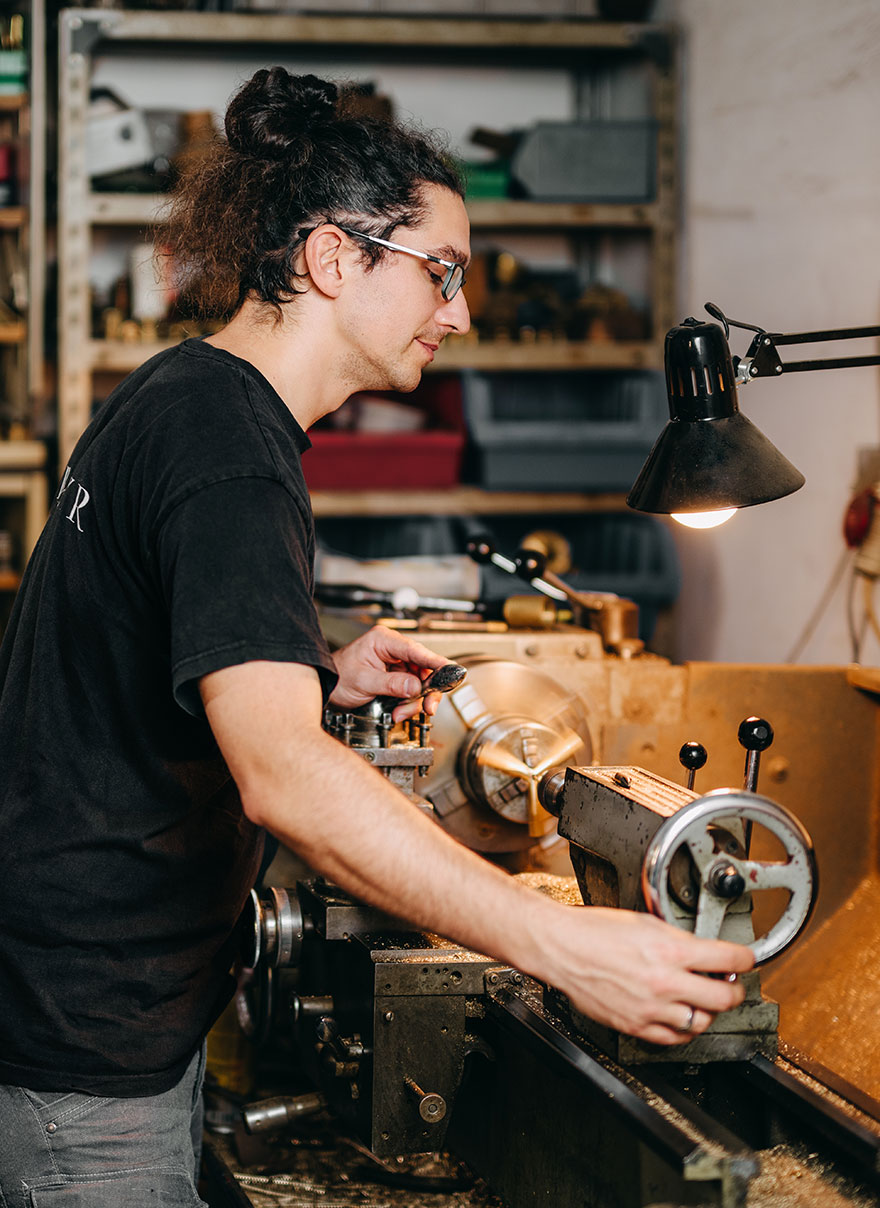
STORIES
STORIES

